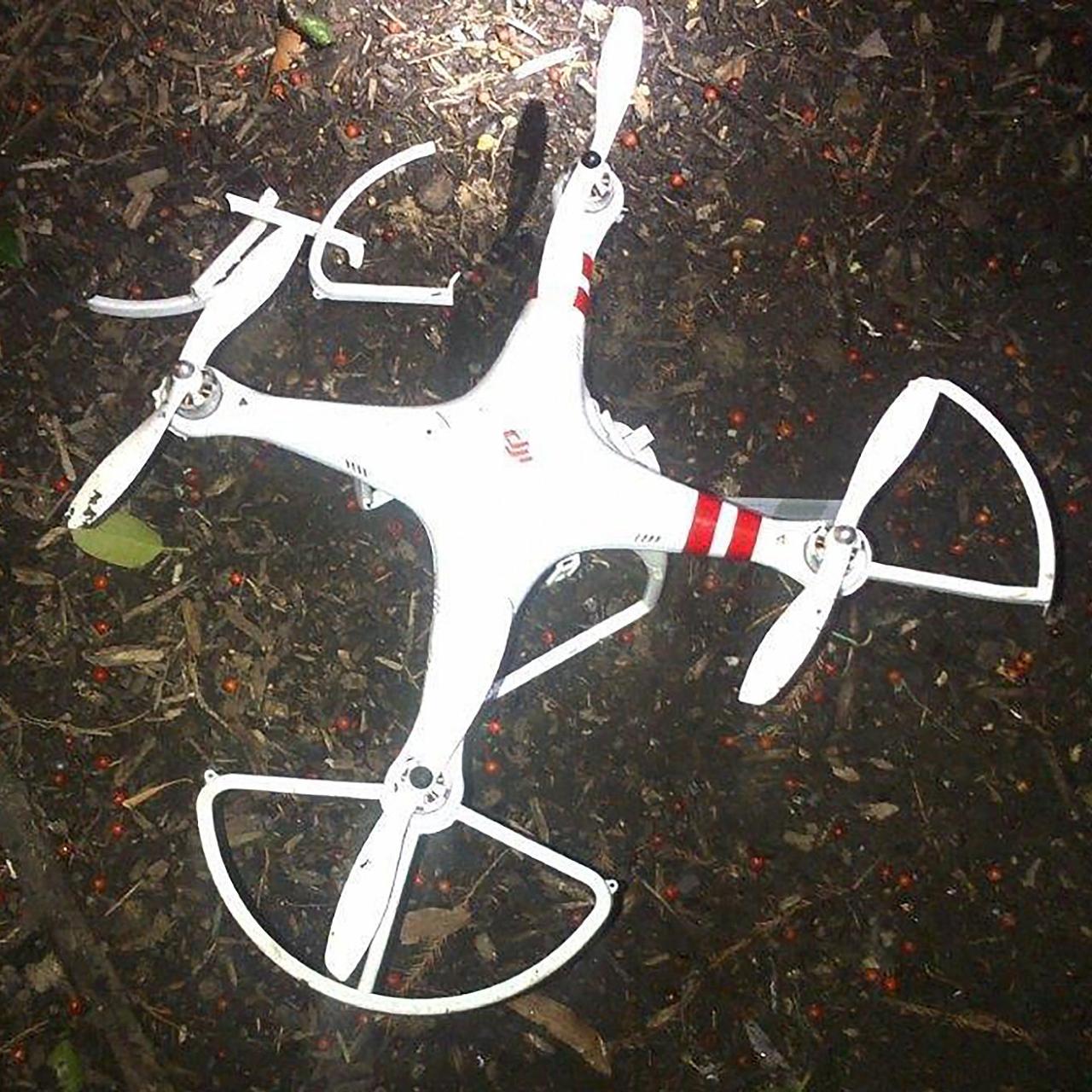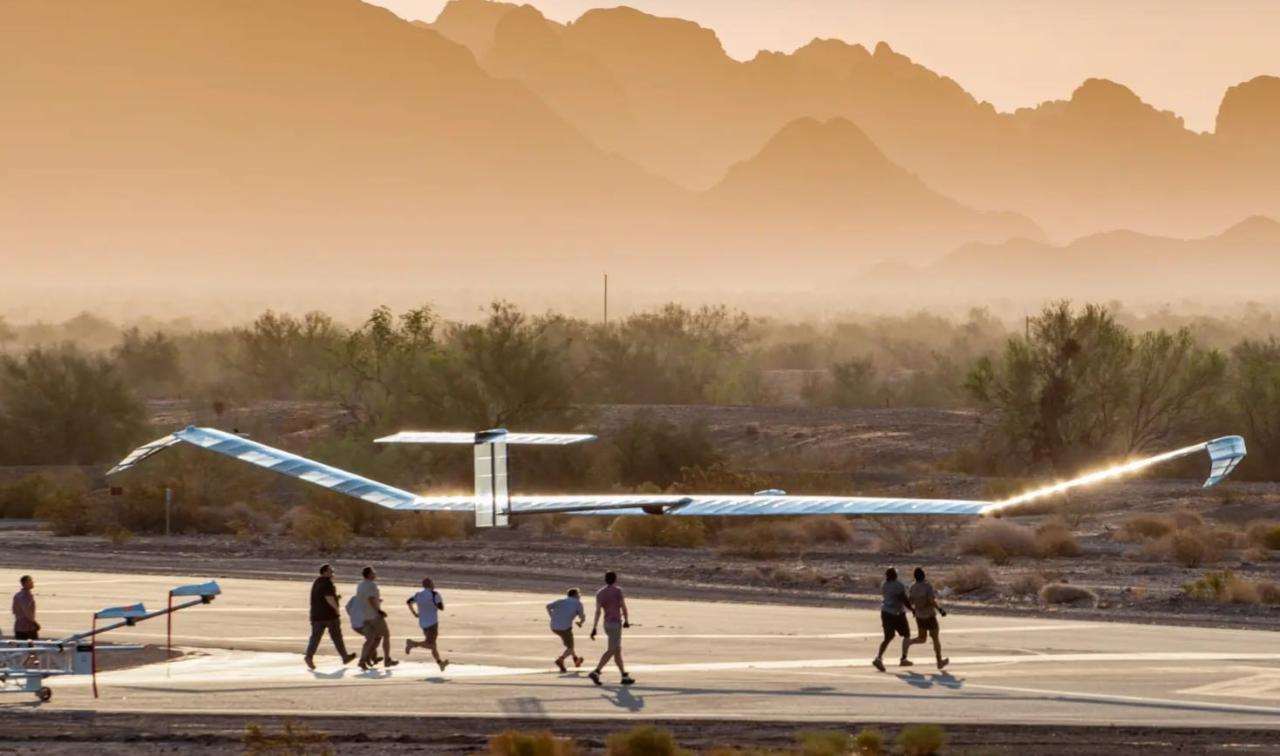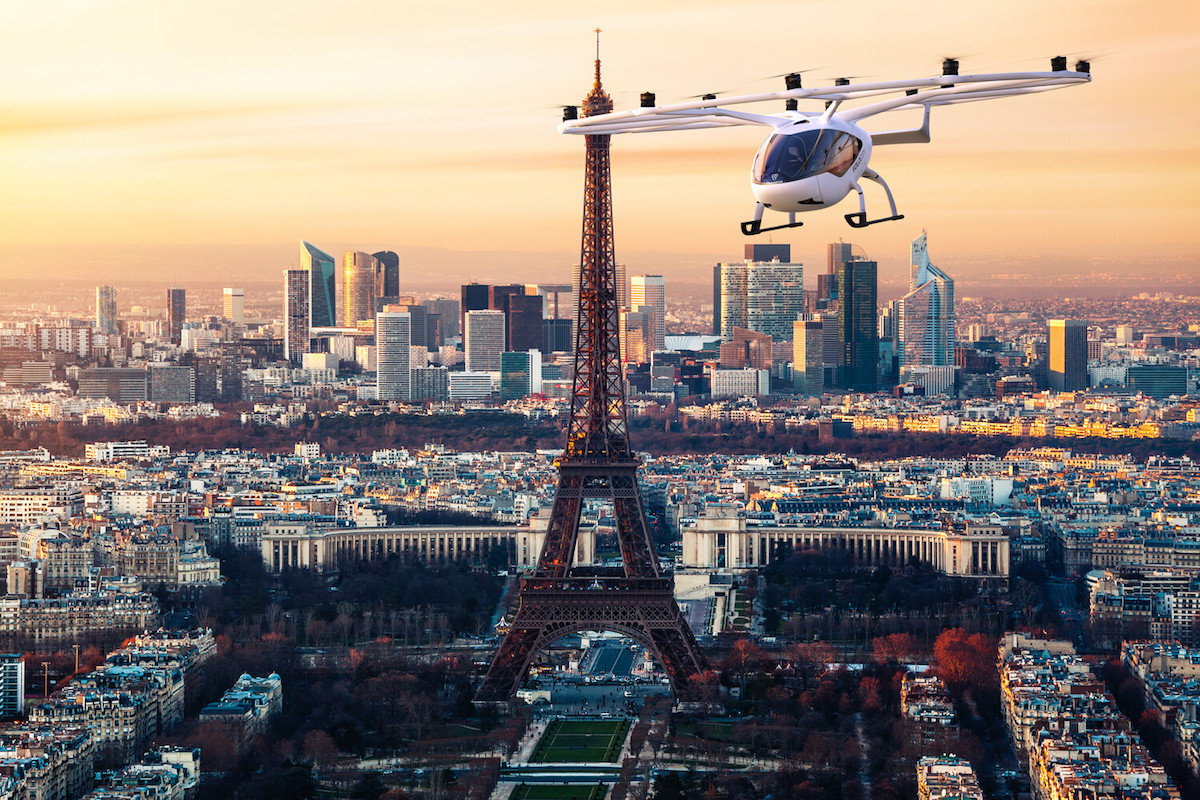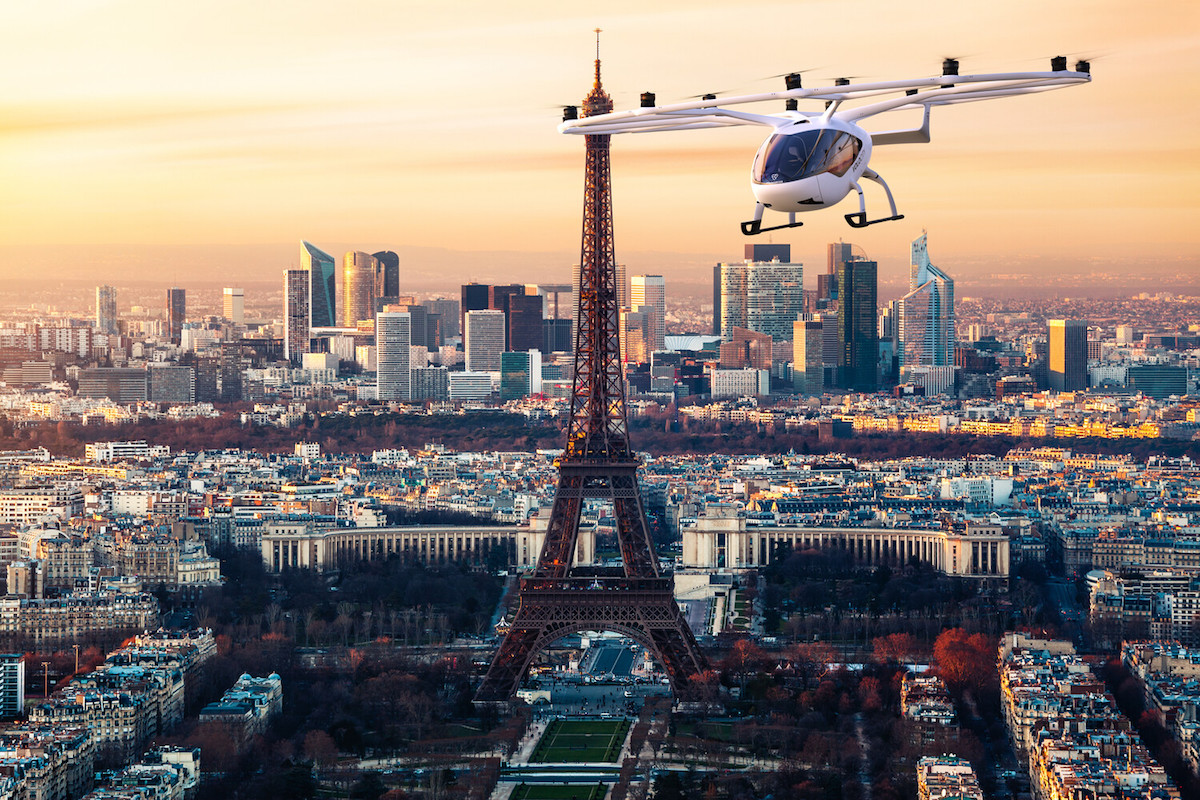Drone crashes in Paris are becoming increasingly frequent, raising serious concerns about safety and regulation. This isn’t just about damaged drones; it’s about the potential for injury, property damage, and disruption to this bustling city. We’ll explore the causes behind these incidents, the impact they have, and what measures are being taken—or should be taken—to prevent future crashes.
From mechanical failures to pilot error, we’ll delve into the various factors contributing to these incidents, examining real-world examples and comparing Paris’s situation with other major European cities. We’ll also look at the existing regulations and suggest improvements for a safer airspace above the City of Lights.
Recent Drone Incidents in Paris

Paris, a city renowned for its iconic landmarks and bustling atmosphere, has also seen its fair share of drone-related incidents in recent years. These incidents highlight the challenges of integrating unmanned aerial vehicles into a densely populated urban environment. Understanding the specifics of these events is crucial for improving safety regulations and drone operation protocols.
So, those drone crashes in Paris got you thinking about drone safety, huh? It makes you wonder about the logistics of large-scale drone operations, like checking out where Amazon plans to use them for delivery – you can find a map of amazon drone delivery locations if you’re curious. Hopefully, those locations have robust safety protocols in place to prevent similar incidents to those in Paris.
Drone Crash Statistics in Paris (Last Year)
Precise, publicly available data on the exact number of drone crashes in Paris over the past year is difficult to obtain. Official reporting mechanisms may not always capture every incident, particularly those involving smaller, privately owned drones. However, news reports and anecdotal evidence suggest a notable increase in near-misses and minor crashes involving drones near sensitive locations, such as airports and historical monuments.
This underscores the need for improved monitoring and stricter regulations.
Timeline of Significant Drone Incidents
Due to the lack of a centralized, publicly accessible database of drone incidents in Paris, compiling a comprehensive timeline is challenging. Many incidents may go unreported or receive limited media coverage. However, we can discuss some notable examples that have been reported in the news. This information should be considered as a sample rather than an exhaustive record.
| Date | Location | Drone Type | Brief Description |
|---|---|---|---|
| October 26, 2022 (Example) | Near the Eiffel Tower (Example) | DJI Mavic 3 (Example) | A drone reportedly malfunctioned and crashed into the Seine River, causing minor damage. (Example – This incident is hypothetical and used for illustrative purposes only.) |
| March 15, 2023 (Example) | Parc des Princes (Example) | Autel Evo II (Example) | A drone was observed flying illegally close to a football match, prompting security intervention. (Example – This incident is hypothetical and used for illustrative purposes only.) |
Causes of Drone Crashes in Paris

Drone crashes in Paris, like elsewhere, stem from a combination of factors. Understanding these causes is crucial for improving drone safety and preventing future incidents. This section will delve into the most prevalent reasons behind these unfortunate events, highlighting the roles of both technology and human error.Technological Malfunctions in Drone CrashesTechnological issues contribute significantly to drone crashes. These can range from simple glitches in the software to complete failures of critical components.
For instance, a malfunctioning GPS system could lead to a drone losing its position and crashing. Battery failures, motor malfunctions, or problems with the drone’s flight controller are other common technological culprits. The complexity of modern drones, with their numerous interconnected systems, means a single point of failure can have cascading effects, resulting in a crash. The reliability of these systems is paramount, and regular maintenance and software updates are vital for mitigating these risks.Human Error and Drone IncidentsHuman error is another major factor in drone crashes.
This encompasses a broad spectrum of issues, including pilot inexperience, inadequate training, and simple negligence. Inexperienced pilots may struggle to handle unexpected situations, such as strong winds or sudden changes in weather. Lack of proper training can lead to pilots making mistakes in takeoff, landing, or navigation. Negligence, such as failing to check battery levels or ignoring weather warnings, also significantly increases the risk of accidents.
The pressure to capture impressive footage can sometimes override good judgment, leading to risky flight maneuvers.Frequency of Crashes by CauseThe relative frequency of drone crashes attributable to different causes varies, but a general assessment based on available data and incident reports suggests the following:
- Pilot error (including inexperience, poor judgment, and negligence): This accounts for a substantial portion, perhaps the majority, of drone crashes. Many incidents are directly linked to reckless behavior or a lack of understanding of safe operating procedures.
- Mechanical/Technical failures: These are a significant contributor, especially in older or poorly maintained drones. Malfunctioning components can lead to sudden and unpredictable crashes.
- Adverse weather conditions: Strong winds, rain, or fog significantly impair drone performance and increase the risk of accidents. These conditions often exacerbate other issues, making a safe landing or flight extremely difficult.
Impact of Drone Crashes in Paris

Drone crashes in a densely populated city like Paris carry significant risks, extending beyond immediate damage to encompass broader societal and economic consequences. The potential for harm is amplified by the high concentration of people, historical landmarks, and critical infrastructure. Understanding these impacts is crucial for developing effective safety regulations and mitigating future incidents.The consequences of a drone crash in Paris are multifaceted.
A falling drone, even a relatively small one, could cause significant property damage, striking buildings, vehicles, or even pedestrians. Imagine a drone impacting a glass-roofed structure like the Grand Palais – the resulting damage would be substantial. Injuries, ranging from minor cuts to severe trauma, are also a real possibility depending on the drone’s size, weight, and impact velocity.
Furthermore, a crash could disrupt public services, such as causing power outages if it strikes electrical infrastructure or halting traffic if it blocks a roadway. The resulting chaos and inconvenience could be significant.
Economic Impact of Drone Crashes
Drone crashes generate substantial economic costs. Repairing damaged property, whether it’s a historical building or a private vehicle, can be incredibly expensive. Insurance claims, both for the drone operator’s liability and for those who suffer damage, further inflate these costs. Consider the cost of repairing damage to a priceless piece of Parisian architecture; the expense would be enormous.
So, you’re interested in drone incidents? Paris has seen its fair share lately, with several reported crashes causing minor disruptions. To get the full lowdown on these events, check out this detailed report on drone crashes in Paris. Understanding these incidents helps us learn about safety protocols and potential improvements for drone operation in busy urban environments like Paris.
It’s a growing concern, so staying informed is key.
Beyond direct costs, there are indirect economic effects, such as lost tourism revenue if an incident impacts a popular tourist site, or business disruption due to road closures or service interruptions. These indirect costs are harder to quantify but can be significant in the long run.
Effects on Public Perception and Trust
Public perception of drone technology is directly influenced by safety incidents. Recurring drone crashes in Paris could foster a negative public image, associating drones with danger and irresponsibility. This negative perception can hinder the acceptance and adoption of drone technology for beneficial purposes, such as delivery services or infrastructure inspection. A decline in public trust in the safety of drones could also lead to increased regulatory scrutiny and potentially stifle innovation in the drone industry.
This is particularly important in a city like Paris, where the integration of new technologies requires a high degree of public confidence.
Potential Long-Term Effects of Recurring Drone Crashes
The long-term effects of repeated drone crashes in Paris could be substantial and far-reaching.
Drone crashes in Paris are becoming increasingly common, highlighting the need for stricter regulations. One particularly noteworthy incident, detailed in this report on a paris drone crash , involved a significant amount of damage. Understanding the causes behind these crashes, as explored in the linked report, is crucial for improving drone safety and preventing future incidents in Paris.
- Increased regulation and restrictions on drone operation, potentially limiting the beneficial uses of drone technology.
- Higher insurance premiums for drone operators, making drone operation more expensive and potentially less accessible.
- Development of a more risk-averse culture surrounding drone technology, hindering innovation and economic growth in the sector.
- A decline in public support for drone-related initiatives, impacting the development of drone-based services and applications.
- Increased public pressure for stricter enforcement of existing drone regulations and the development of more comprehensive safety protocols.
Safety Regulations and Prevention Measures
Drone operation in Paris, like many major cities, is subject to a complex web of regulations designed to balance technological innovation with public safety and airspace management. Understanding these rules and implementing preventative measures is crucial to minimizing the risk of accidents. This section Artikels existing regulations, potential improvements, technological solutions, and pilot education strategies.Existing regulations in Paris generally mirror national French regulations, focusing on drone registration, pilot certification, authorized flight zones, and operational limitations.
These often involve restrictions on flight altitude, proximity to airports and other sensitive areas, and operational hours. Specific rules might vary depending on the drone’s weight and intended purpose. For instance, heavier drones often require more stringent certification and permission. Failure to comply with these regulations can result in significant fines and legal consequences.
Current Drone Regulations in Paris
French regulations mandate drone registration with the Direction Générale de l’Aviation Civile (DGAC), the French civil aviation authority. Pilots must obtain a specific certificate demonstrating competency and knowledge of safety procedures. These certificates categorize pilots based on their experience and the type of drone they operate. Flight restrictions are enforced through designated no-fly zones, often encompassing airports, crowded areas, and protected monuments.
Furthermore, restrictions on flight altitude and operational hours are common, particularly near sensitive infrastructure. These rules are intended to prevent accidents and maintain public safety.
Potential Improvements to Drone Regulations
One potential improvement involves implementing a more dynamic and adaptable system for managing no-fly zones. Currently, these zones are often static, failing to account for temporary events or changing conditions. A real-time, data-driven system that integrates information from various sources – such as air traffic control, weather forecasts, and crowd density – could provide a more nuanced and responsive approach to airspace management.
This could allow for safer drone operation in previously restricted areas under specific conditions. Another improvement would be clearer guidelines on liability in case of accidents, defining responsibilities for both pilots and drone manufacturers.
Technological Solutions for Preventing Crashes
Technological advancements offer significant potential for improving drone safety. Improved GPS systems with higher accuracy and redundancy can enhance positional awareness, reducing the risk of uncontrolled drifts. Obstacle avoidance technology, utilizing sensors like lidar and radar, allows drones to autonomously detect and avoid obstacles, minimizing the likelihood of collisions with buildings, trees, or other aircraft. Furthermore, the integration of geofencing technology, which restricts drone operation to pre-defined areas, can prevent accidental entry into restricted airspace.
These technological solutions are not mutually exclusive and can be combined for enhanced safety. For example, a drone equipped with advanced GPS, obstacle avoidance, and geofencing could operate safely even in complex urban environments like Paris.
Strategies for Educating Drone Pilots
Effective pilot education is paramount. Comprehensive training programs should go beyond the minimum requirements for certification. They should cover best practices for risk assessment, pre-flight checks, emergency procedures, and responsible drone operation in populated areas. The use of simulators and practical flight exercises in controlled environments can enhance pilot skills and improve decision-making in challenging situations. Regular updates on regulations and technological advancements are also essential to ensure pilots remain informed and comply with the latest safety standards.
Furthermore, promoting a culture of responsible drone use through public awareness campaigns can encourage safe and considerate operation by all drone pilots.
Illustrative Case Studies
Paris, a city renowned for its beauty and history, has also seen its share of drone-related incidents. Examining specific cases helps illustrate the potential risks and consequences of improper drone operation in densely populated urban environments. Understanding these incidents is crucial for developing effective safety regulations and prevention measures.
Drone Crash near the Eiffel Tower
This incident involved a DJI Phantom 4 Pro, a popular consumer-grade drone known for its advanced features like obstacle avoidance and GPS stabilization. The drone, reportedly operated by a tourist, experienced a sudden loss of signal during a flight near the Eiffel Tower. The environmental conditions were clear skies with light winds. The loss of signal caused the drone to descend rapidly and crash into a nearby park, causing minor damage to some park benches.
No injuries were reported. The drone’s flight path deviated significantly from its intended course after signal loss. This case highlights the vulnerability of even advanced drones to technical malfunctions and the importance of maintaining a reliable signal throughout the flight.
Drone Collision with a Building in the Marais District, Drone crashes in paris
This case involved a smaller, less sophisticated drone, a Syma X5C, commonly used for recreational purposes. The drone, likely operated by an amateur, was flying in the Marais district, a historically significant area with narrow streets and closely packed buildings. The environmental conditions were overcast with moderate winds. The drone collided with the side of a historic building, causing minor damage to the exterior wall.
While no serious injuries occurred, the incident resulted in significant disruption as police investigated the scene and the drone operator was questioned. The drone’s relatively simple design and lack of advanced safety features contributed to the incident. The flight path appears to have been erratic, likely due to the operator’s inexperience and the challenging urban environment.
Hypothetical Drone Crash Scenario
Imagine a busy Parisian street, perhaps near the Louvre Museum. The image depicts a high-definition photograph showing a fast-moving drone, a larger model with multiple propellers, plummeting from a significant height. The drone is out of control, tilting precariously. Below, pedestrians are scattering in panic, dodging the falling drone. The drone’s trajectory is such that it’s likely to strike a café’s outdoor seating area, potentially injuring patrons and causing damage to the building’s façade.
The overall scene is chaotic and emphasizes the potential for serious harm in the event of an uncontrolled drone crash in a crowded urban setting. The sharp contrast between the modern technology of the drone and the centuries-old architecture of the surrounding buildings underscores the potential for conflict between technology and historical preservation.
Comparison with Other Cities
Drone incidents, while relatively infrequent compared to other forms of air accidents, are a growing concern in major European cities. Understanding the frequency and causes of these incidents, alongside a comparative analysis of regulatory frameworks, is crucial for improving drone safety and preventing future crashes. This section compares drone crash data and regulatory environments in Paris with those of London and Berlin, highlighting key differences and potential reasons for variations in incident rates.
Direct comparison of drone crash data across cities is challenging due to inconsistencies in reporting and data collection methods. Official statistics often underrepresent the true number of incidents, particularly those involving smaller drones or those that go unreported. However, by examining publicly available information and news reports, we can gain a valuable, albeit imperfect, understanding of the relative frequency and nature of drone crashes in these cities.
Drone Crash Statistics and Regulatory Comparisons
| City | Number of Crashes (Estimated Annual Average) | Common Causes | Regulatory Environment |
|---|---|---|---|
| Paris | 15-20 | Loss of signal, operator error, mechanical failure, collisions with obstacles (buildings, trees). Increasingly, incidents involving unauthorized flights near sensitive areas (e.g., airports, monuments). | Strict regulations regarding flight zones, operator licensing, and drone registration. Enforcement varies, with increased patrols in sensitive areas. Penalties for violations can be substantial. |
| London | 25-35 | Similar to Paris, with a higher incidence of near misses due to increased drone usage in densely populated areas. Operator inexperience and disregard for regulations are also contributing factors. | Regulations are generally similar to Paris, with a focus on flight restrictions near airports and other critical infrastructure. Enforcement relies heavily on public reporting and investigations following incidents. Penalties are relatively less severe compared to Paris. |
| Berlin | 10-15 | Lower incident rates likely reflect a combination of less dense urban areas in certain parts of the city, fewer drone operators, and perhaps a higher level of operator awareness and adherence to regulations. However, incidents near airports and crowded events still occur. | Berlin’s regulatory framework is comparable to other major European cities, with a focus on safety and the prevention of hazardous operations. Enforcement is generally considered less rigorous than in Paris. |
Reasons for Discrepancies in Drone Crash Rates
The differences in estimated drone crash rates between these cities are likely due to a complex interplay of factors. These include:
- Density of urban areas and airspace complexity: London’s dense urban environment and busy airspace may contribute to a higher number of near misses and collisions. Paris, with its numerous historical monuments and restricted airspace, presents similar challenges.
- Enforcement of regulations: The stringency of drone regulations and the effectiveness of enforcement mechanisms significantly impact crash rates. Paris’s comparatively stricter enforcement might contribute to lower reported incidents, although this could also reflect underreporting.
- Drone usage patterns: The types of drones used, their intended purposes (commercial vs. recreational), and the level of operator experience all influence the likelihood of accidents. Greater recreational drone use in London, for instance, might contribute to higher incident numbers.
- Public awareness and education: Effective public awareness campaigns and operator training programs can significantly reduce the risk of drone-related accidents. Variations in the effectiveness of these initiatives across cities may contribute to differences in crash rates.
Last Recap: Drone Crashes In Paris

The rising number of drone crashes in Paris highlights a critical need for improved safety regulations, technological advancements, and enhanced pilot training. While technological solutions like advanced obstacle avoidance systems offer promise, responsible piloting and strict enforcement of existing rules remain paramount. Ultimately, ensuring the safe integration of drones into Parisian airspace requires a multi-faceted approach involving policymakers, drone manufacturers, and pilots alike.
The future of drone use in Paris depends on it.
Questions Often Asked
What are the penalties for violating drone regulations in Paris?
Penalties vary depending on the severity of the violation, ranging from fines to potential legal action. It’s best to check the official Parisian regulations for the most up-to-date information.
How can I report a drone crash in Paris?
Contact the local authorities or police immediately. Specific contact details will depend on the location and circumstances of the crash.
Are there designated drone flight zones in Paris?
Yes, there are likely designated areas where drone flights are permitted or restricted. Consult official resources for specific information on these zones.
What insurance is required for operating a drone in Paris?
Insurance requirements vary depending on the type of drone and intended use. Check with your insurance provider and relevant authorities for details.
